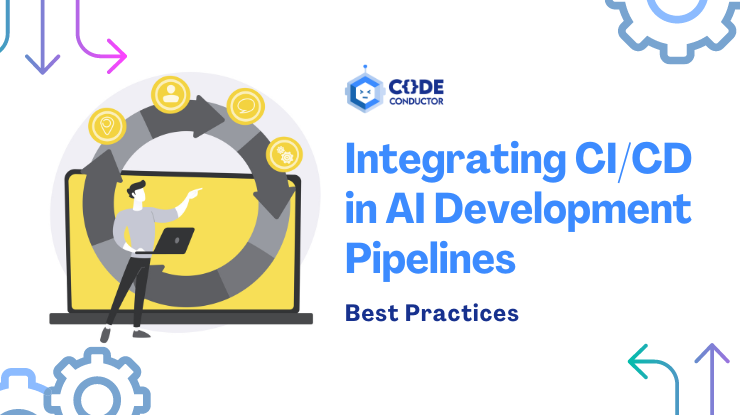Key Takeaways
- Streamlined Workflow: CI/CD automates the integration and deployment of AI models, reducing manual errors and accelerating the development cycle.
- Continuous Testing: Ensures that AI models are continuously tested, validated, and updated, improving accuracy and reliability.
- Scalability: Facilitates scalable model deployment using containerization (Docker) and orchestration (Kubernetes), enhancing performance.
- Data Management: Emphasizes data versioning, pipeline automation, and reproducibility to handle large datasets effectively.
- Collaboration: Enhances collaboration between data scientists and DevOps teams, leading to better integration of AI solutions.
- Security: Incorporates automated security checks and compliance measures within the CI/CD pipeline, safeguarding AI deployments.
- Tools: Utilizes tools like Jenkins, Git, MLflow, and DVC for efficient CI/CD processes in AI development.
- Model Monitoring: Implements continuous monitoring and alerting systems to track model performance and manage drift.
Implementing AI development is complex. It involves many steps, from data collection to model deployment.
Developers often need help with maintaining quality, speed, and consistency. Errors can slip through, and fixing them is time-consuming. This slows down the entire development process and reduces the reliability of AI applications.
However, Continuous Integration and Continuous Deployment (CI/CD) can solve these issues. CI/CD automates testing and deployment, ensuring each change is reliable and quick. It helps developers catch errors early, maintain code quality, and streamline the development process. By integrating CI/CD into AI projects, developers can focus on innovation rather than manual tasks.
After all, using CI/CD in AI development brings many benefits:
- Speed: Automates repetitive tasks and accelerates delivery.
- Quality: Ensures consistent testing and reduces errors.
- Reliability: Maintains a stable development environment.
This guide will walk you through the best practices for implementing CI/CD in AI development. Here, you’ll learn how to improve your workflow and deliver better AI solutions, regardless of your level of experience or knowledge of AI. Additionally, we will explore popular tools and technologies for CI/CD in AI, and discuss future trends in CI/CD for AI development that can help you stay ahead in this rapidly evolving field.
In This Post
- Key Takeaways
- What is Continuous Integration (CI)?
- What is Continuous Deployment (CD)?
- Best Practices for CI in AI Development
- Best Practices for CD in AI Development
- 10 Popular Tools and Technologies for CI/CD in AI
- Future Trends in CI/CD for AI Development
- Summing It Up
- People Also Ask Questions with Answers
- 1. What are the common challenges in implementing CI/CD for AI models?
- 2. How can CI/CD improve the collaboration between data scientists and DevOps teams?
- 3. How does CI/CD handle the scalability of AI model deployments?
- 4. What role does infrastructure as code (IaC) play in CI/CD for AI?
- 5. How can security be integrated into the CI/CD pipeline for AI?
What is Continuous Integration (CI)?
Continuous Integration (CI) is a development practice where developers integrate code into a shared repository frequently. Each integration is verified by an automated build and automated tests.
This process helps detect problems early, making it easier to resolve issues quickly. The main goals of CI are to improve software quality and reduce the time it takes to deliver updates.
CI involves build automation, which ensures that every change in code triggers a build process, and testing automation, which runs tests to validate the new code.
What is Continuous Deployment (CD)?
Continuous Deployment (CD) takes things a step further. Once the code passes all the automated tests in CI, it is automatically deployed to production. This means every change that passes the tests is immediately available to users.
The CD focuses on delivering new features, fixes, and updates as quickly as possible while maintaining high quality.
The deployment pipelines in CD ensure that the process is smooth and consistent, minimizing human intervention and reducing the risk of errors.
Both CI and CD play crucial roles in the modern software development lifecycle, especially in AI projects. In CI, build automation and testing automation ensure that new code is constantly integrated and verified, making it easier to spot and fix issues early. This continuous feedback loop keeps the development process agile and responsive.
Best Practices for CI in AI Development
Implementing Continuous Integration (CI) in AI development requires several key practices to ensure smooth, efficient, and error-free processes.
Set Up CI Pipelines
Creating a robust CI pipeline is essential. A CI pipeline automates the steps of integrating code changes, running tests, and generating build artifacts. Tools like Jenkins, GitLab CI, or Travis CI can help you set up these pipelines.
Each stage of your pipeline should be clearly defined, starting from code integration to testing and build verification. This structured approach ensures that every change is systematically tested and validated before moving forward.
Automated Testing
Automated testing is crucial for maintaining high code quality and catching errors early. Here’s how to do it effectively:
- Unit Testing: Check individual components of your AI models. These tests ensure that each part works as expected.
- Integration Testing: Verify that different parts of your system work together correctly. This ensures that combined modules function properly as a whole.
Automated tests should run with every code change, providing immediate feedback. This helps identify and fix issues quickly, maintaining the stability and reliability of your AI models.
Version Control
Effective version control is vital for tracking changes and managing different versions of your code and AI models.
Use systems like Git to maintain a history of changes and facilitate collaboration among team members.
Ensure all changes are committed and pushed to a central repository. Employ branching strategies to manage feature development and releases, keeping the main branch stable.
Code Quality
Maintaining high code quality is essential. Incorporate static code analysis and code reviews into your CI process:
- Static Code Analysis: Use tools like SonarQube to identify code smells and potential issues.
- Code Reviews: Regularly review code with peers to ensure adherence to coding standards and best practices. This collaborative approach enhances code quality and catches issues that automated tools might miss.
Build Verification
Verify each build before integrating it into the main codebase. This involves running a series of tests and checks to confirm that the build is stable and functional.
Build verification prevents faulty code from being deployed, reducing the risk of bugs in the production environment.
Best Practices for CD in AI Development
Continuous Deployment (CD) in AI development focuses on delivering updates quickly and reliably while maintaining the stability and performance of AI models in production.
Deployment Automation
Automate the deployment process to ensure consistency and reduce manual errors. Tools like Ansible, Chef, or Kubernetes can help automate the deployment of your AI models and applications.
Automation makes the deployment process repeatable and reliable, freeing developers from manual, error-prone tasks.
Model Monitoring
Continuous monitoring of deployed models is essential to ensure they perform as expected in production. Implement monitoring tools and practices to track the performance, accuracy, and response times of your models.
Tools like Prometheus and Grafana provide real-time insights and alert you to any issues, allowing for quick resolutions.
Rollback Strategies
Robust rollback strategies are crucial for quickly reverting to a previous version if a deployment fails or causes issues.
Use version control to manage model versions and deployment scripts, making it easy to roll back to a stable state.
Implement canary releases, where new updates are deployed to a small subset of users first, to identify issues before a full rollout.
Release Management
Effective release management is key to successful continuous deployment. Carefully plan and manage your releases to ensure new features and updates are thoroughly tested before deployment.
Use staging environments to test deployments under conditions that closely mimic production, ensuring smooth transitions and minimizing risks.
Model Deployment
Deploying AI models requires careful handling of dependencies and environment configurations. Use containerization technologies like Docker to package your models along with their dependencies.
This approach ensures consistency and portability across different environments, simplifying the deployment process.
10 Popular Tools and Technologies for CI/CD in AI
Implementing CI/CD effectively in AI projects requires the right tools and technologies. These tools help automate and streamline the development, testing, and deployment processes.
Here’s an in-depth review of the most popular and effective tools for CI/CD in AI projects.
1. Jenkins

Jenkins is an open-source automation server that facilitates building, testing, and deploying software. It supports continuous integration by automating the build and testing process, making it easier to detect and fix errors early.
- Continuous Integration Tool: Jenkins automates the integration process, ensuring that new code is consistently tested and merged.
- Build Automation: It automatically builds projects and runs tests, ensuring that changes do not break the existing codebase.
- Extensibility: With over 1,500 plugins, Jenkins can be customized to fit various development workflows and integrate with numerous other tools.
2. Git

Git is a distributed version control system essential for tracking changes in the codebase and managing different versions of AI models. It facilitates collaboration among team members.
- Version Control System: Git tracks changes and manages code versions, making it easy to revert to previous states if needed.
- Branching and Merging: Git allows developers to work on separate branches, integrating new features only when they are ready.
- Collaboration: Supports teamwork and code review processes, ensuring high code quality through peer reviews.
3. Docker

Docker is a containerization platform that packages AI models and their dependencies into containers. Containers ensure that software runs consistently across different environments.
- Containerization: Docker packages applications and dependencies into containers, creating isolated environments for running software.
- Consistency: Containers ensure the same environment across development, testing, and production, reducing the “it works on my machine” problem.
- Portability: Containers can run on any system with Docker installed, making them highly portable and scalable.
4. Kubernetes
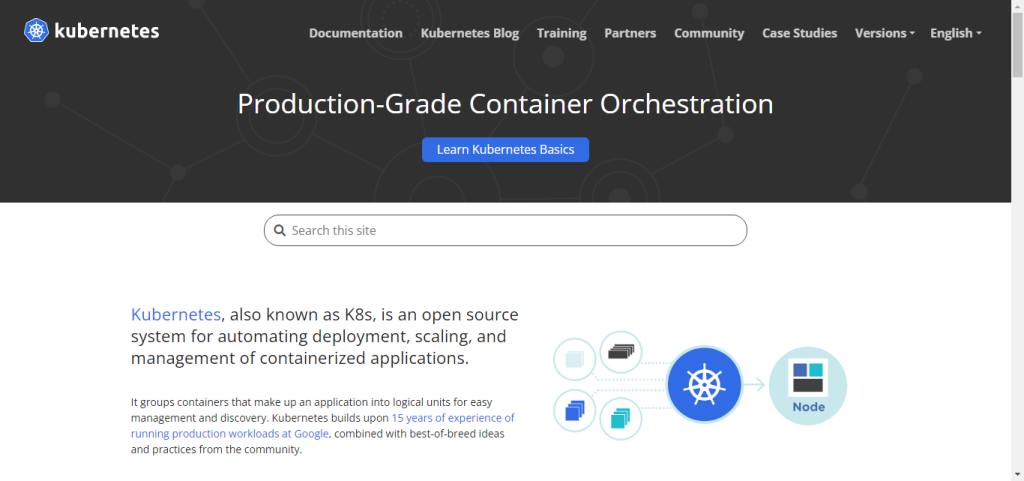
Kubernetes is an open-source orchestration tool for managing containerized applications. It automates the deployment, scaling, and management of containers, ideal for handling complex AI workloads.
- Orchestration Tool: Manages the deployment, scaling, and operation of containerized applications across clusters of machines.
- Automation: Schedules and executes containerized applications automatically, optimizing resource utilization.
- Scalability: Easily scales applications to handle varying workloads, ensuring that resources are used efficiently.
5. Travis CI
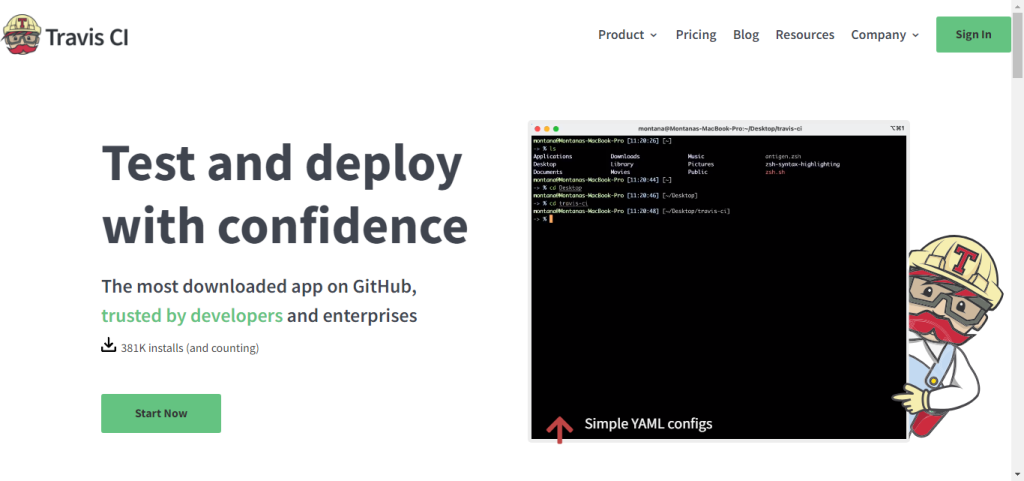
Travis CI is a continuous integration service that integrates with GitHub. It automatically builds and tests code changes, ensuring that new code is reliable.
- Integration with GitHub: Automatically triggers builds and tests for every code change pushed to the repository.
- Automated Testing: Runs tests in various environments, ensuring that the code works under different conditions.
- Configuration: Simple configuration through a .travis.yml file in the code repository.
6. CircleCI

CircleCI is a continuous integration and delivery platform that automates the testing and deployment process. It is known for its speed and ease of use.
- Continuous Integration and Delivery: Automates building, testing, and deployment processes.
- Customization: Highly configurable through YAML files, allowing for complex workflows and conditions.
- Parallel Testing: Runs tests in parallel, significantly reducing build times.
7. Ansible
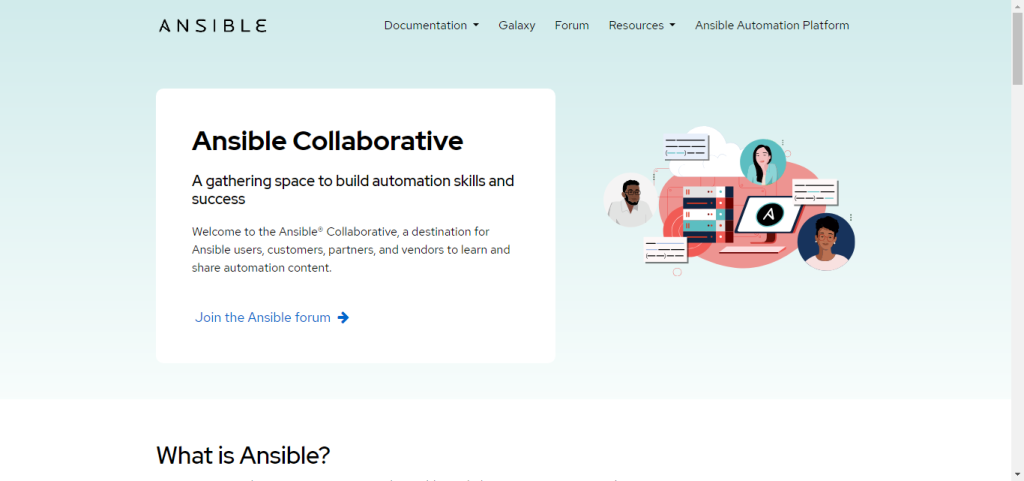
Ansible is an open-source automation tool for IT tasks such as configuration management, application deployment, and task automation.
- Configuration Management: Manages and enforces configuration consistency across systems.
- Application Deployment: Automates the deployment of applications, reducing manual errors.
- Task Automation: Simplifies repetitive tasks, saving time and reducing the risk of human error.
8. Azure DevOps
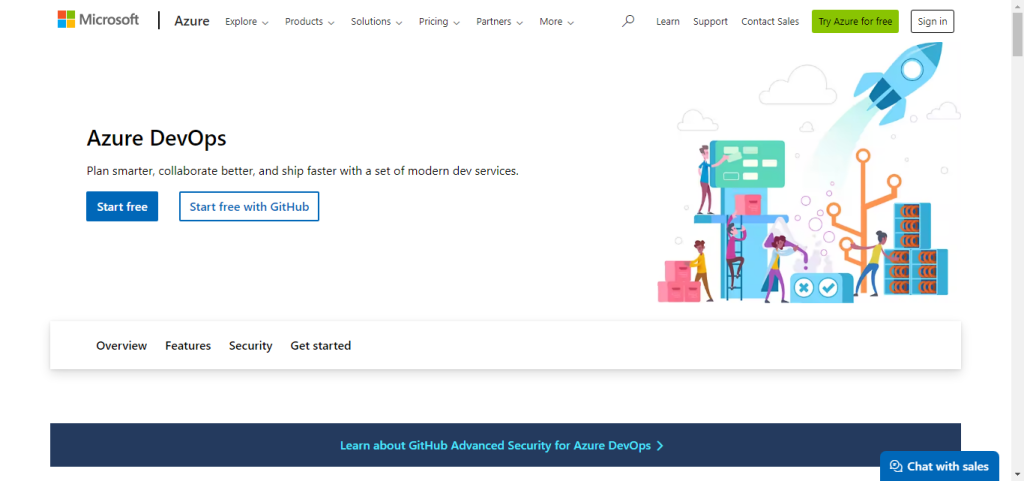
Azure DevOps provides developer services for support teams to plan work, collaborate on code development, and build and deploy applications.
- Comprehensive Toolset: Includes Azure Repos, Azure Pipelines, Azure Boards, and more.
- Continuous Integration and Delivery: Supports automated CI/CD pipelines for faster and more reliable software delivery.
- Integration: Works seamlessly with other Azure services and popular third-party tools.
9. Bamboo
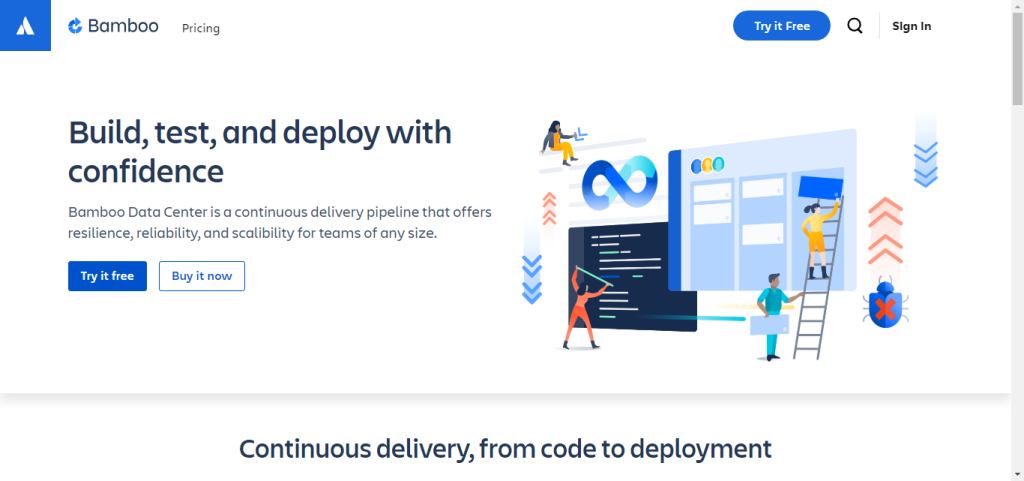
Bamboo is a continuous integration and delivery tool from Atlassian that integrates closely with JIRA and Bitbucket.
- Integration with Atlassian Tools: Works well with JIRA for issue tracking and Bitbucket for source code management.
- Automated Builds and Tests: Automates the build, test, and deployment process.
- Customization: Highly customizable with various plugins and scripts.
10. Spinnaker

Spinnaker is an open-source multi-cloud continuous delivery platform for releasing software changes with high velocity and confidence.
- Multi-Cloud Support: Supports deployment across multiple cloud platforms, including AWS, Google Cloud, and Kubernetes.
- Automated Deployment Pipelines: Automates the entire deployment pipeline, from code changes to production.
- Scalability: Handles large-scale deployments and complex workflows.
Future Trends in CI/CD for AI Development
The landscape of CI/CD in AI development is rapidly evolving. New technologies and methodologies are continuously emerging, promising to streamline further and enhance the development process.
Here are some key trends and future directions to watch for in CI/CD for AI.
-
Automation Advancements
Automation in CI/CD is set to become even more advanced. Integrating AI and machine learning into automation tools will allow for smarter and more efficient processes. These advancements will include predictive analytics to foresee potential issues, intelligent testing that adapts based on previous results, and automated resolution of common problems.
As a result, development pipelines will become faster, more reliable, and less dependent on human intervention.
-
AI-Driven DevOps
AI-driven DevOps is an exciting emerging trend. AI can analyze vast amounts of data from the development process to identify patterns and suggest improvements.
This includes optimizing build processes, predicting failures, and recommending performance enhancements. Using AI in DevOps can result in greater efficiency and greater automation, resulting in faster and more reliable software delivery.
-
Machine Learning Operations (MLOps)
MLOps is the practice of applying DevOps principles to machine learning projects. It focuses on automating and streamlining the entire machine-learning lifecycle, from data preparation to model deployment and monitoring. The future of MLOps includes:
-
- Automated Model Training: Leveraging AI to optimize and automate the training of machine learning models.
- Continuous Monitoring: Implementing advanced monitoring tools to track real-time model performance and automatically retrain models as needed.
- Scalable Infrastructure: Using cloud-based solutions to scale resources dynamically based on the demands of training and deploying models.
-
Integration of CI/CD with AI Frameworks
Future CI/CD pipelines will be tightly integrated with popular AI frameworks such as TensorFlow, PyTorch, and Keras. This integration will simplify the process of building, testing, and deploying AI models.
Developers will be able to set up end-to-end pipelines that handle everything from data preprocessing to model deployment with minimal manual intervention.
-
Enhance Security Measures
As CI/CD processes become more complex, the need for robust security measures grows. Future CI/CD tools will include enhanced security features to protect the integrity of the development pipeline.
This includes automated security testing, vulnerability scanning, and secure coding practices integrated directly into the CI/CD workflow.
-
Collaborative Platforms
Collaboration tools will continue to evolve, making it easier for development teams to work together.
Future CI/CD platforms will include enhanced features for real-time collaboration, code reviews, and feedback loops. This will help teams maintain high code quality and quickly address any issues that arise.
-
Edge Computing Integration
With the rise of edge computing, future CI/CD processes will need to account for the unique challenges of deploying AI models to edge devices. This includes handling limited computational resources, intermittent connectivity, and the need for lightweight models.
CI/CD tools will evolve to support seamless deployment and management of AI models on edge devices, ensuring that they remain performant and reliable.
-
AI-Powered Testing
AI-powered testing will become more prevalent, leveraging machine learning to create more efficient and effective test cases.
These systems will be able to predict where bugs are most likely to occur, generate test cases automatically, and even simulate user interactions to identify potential issues before they reach production.
-
Cloud-Native CI/CD
Cloud-native technologies will continue to shape the future of CI/CD. Tools and platforms built specifically for cloud environments will offer greater scalability, flexibility, and resilience.
These solutions will support complex, distributed CI/CD pipelines that can handle the demands of modern AI development.
-
Continuous Everything
The concept of continuous everything (continuous integration, continuous delivery, continuous testing, continuous monitoring) will become more widespread.
This holistic approach ensures that every aspect of the development lifecycle is continuously improved and optimized, leading to faster and more reliable generative AI solutions.
Summing It Up
In this comprehensive guide, we have explored the various aspects of implementing CI/CD in AI development. Implementing CI/CD brings numerous benefits to AI development, including increased speed, enhanced code quality, and greater reliability.
Looking ahead, the future of CI/CD in AI development is promising, with trends like AI-driven DevOps, MLOps, and advanced automation set to revolutionize the field. To continue producing high-quality, reliable AI solutions, AI developers must embrace these emerging technologies and methodologies.
If you’re looking to streamline your AI development with powerful CI/CD capabilities, consider using CodeConductor, an AI-powered software development platform. CodeConductor helps app founders, product managers, and engineers build apps in minutes.
With its advanced features and intuitive interface, it simplifies the complexities of CI/CD, allowing you to focus on creating innovative solutions. Change your project workflows today with CodeConductor.
Ready to take your App development to the next level? Try CodeConductor today and see how it can do it. Build smarter, faster, and more efficient apps at your fingertips.
People Also Ask Questions with Answers
1. What are the common challenges in implementing CI/CD for AI models?
Answer: Common challenges include managing data versioning, ensuring model reproducibility, integrating with diverse data pipelines, handling model drift, and automating deployment to various environments.
2. How can CI/CD improve the collaboration between data scientists and DevOps teams?
Answer: CI/CD fosters collaboration by automating workflows, providing a shared framework for testing and deployment, enabling continuous feedback, and ensuring consistent environments for development and production.
3. How does CI/CD handle the scalability of AI model deployments?
Answer: CI/CD handles scalability through automated infrastructure provisioning, containerization (e.g., Docker), orchestration tools (e.g., Kubernetes), and cloud-based services that adjust resources based on demand.
4. What role does infrastructure as code (IaC) play in CI/CD for AI?
Answer: Infrastructure as code (IaC) allows for automated, consistent, and scalable infrastructure setup, ensuring that development, testing, and production environments are identical, which reduces configuration drift and enhances reliability.
5. How can security be integrated into the CI/CD pipeline for AI?
Answer: Security can be integrated by incorporating automated security scans, enforcing access controls, performing regular vulnerability assessments, and ensuring compliance with data protection regulations throughout the pipeline.

Founder CodeConductor
